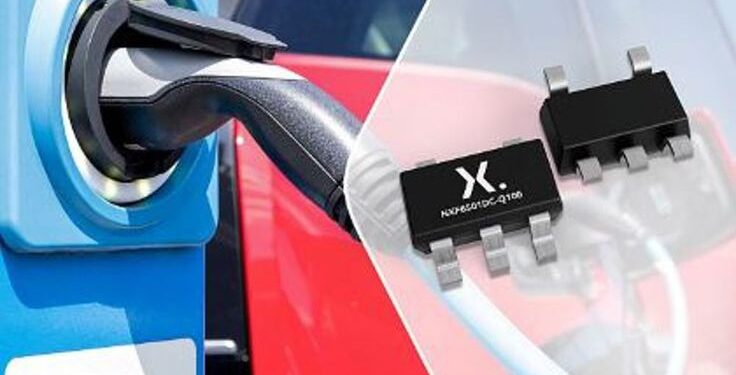As vehicles become more complex, their electronic components must meet high safety and performance standards. In today’s rapidly evolving automotive industry, reliability is essential. Manufacturers aiming to stay competitive must obtain AEC-Q100 Qualification as a critical certification for these components because it sets the standard for quality and is indispensable.
But what does AEC-Q100 involve, and why is it important for engineers and manufacturers? This guide will explore the details of AEC-Q100 Qualification, its requirements, and the benefits it offers. Whether you’re new to the concept or looking for deeper insights, this will help you understand how AEC-Q100 can enhance the quality of automotive electronics.
Importance of AEC-Q100 Qualification in Automotive Applications
AEC-Q100 Qualification is crucial in the automotive industry, where safety and reliability are paramount. It ensures that electronic components can endure harsh vehicle environments, including extreme temperatures, vibrations, and electrical stresses. By undergoing strong testing AEC-Q100 qualified components demonstrate durability and consistent performance over time.
The growing adoption of electric vehicles and advanced driver-assistance systems (ADAS) further emphasizes the need for dependable electronics. Components that meet AEC-Q100 standards contribute to vehicle longevity, enhancing both safety and performance. For manufacturers, prioritizing AEC-Q100 signals a commitment to quality, fostering consumer trust, and improving product reputation in a competitive market.
What is AEC-Q100 Testing?
AEC-Q100 Testing is a rigorous qualification process for integrated circuits (ICs) in automotive applications. It ensures that these components can endure harsh conditions in-vehicle environments, such as extreme temperatures, vibrations, and electrical stress. This standard involves a series of stress tests and reliability assessments that evaluate semiconductor performance under demanding conditions.
By adhering to these stringent protocols, manufacturers can detect potential weaknesses early, improving safety and extending product lifespan.
AEC-Q100 Testing serves as a key quality benchmark in the automotive industry, ensuring that only reliable components are used in vehicles.
Different Levels of AEC-Q100 Qualification
AEC-Q100 qualification includes multiple levels, each tailored to the specific environmental demands of automotive applications:
- Grade 0: For extreme conditions, components are tested to withstand temperatures ranging from -40°C to +150°C. These are ideal for the most demanding automotive environments.
- Grade 1: Suited for applications exposed to temperatures from -40°C to +125°C, ensuring robust performance in harsh automotive settings.
- Grade 2: Covers components operating between -40°C and +105°C, designed for general automotive use where less extreme conditions apply.
These levels ensure components meet reliability standards for different vehicle requirements, contributing to safety and longevity.
Requirements for AEC-Q100 Compliance
AEC-Q100 compliance is essential for ensuring that electronic components used in automotive applications meet high standards for reliability, safety, and performance. This qualification process includes several key requirements that components must meet to be considered suitable for the demanding environments of modern vehicles.
- Temperature Grades
Components must operate effectively under extreme temperature conditions. AEC-Q100 defines specific temperature grades:
- Grade 0: This classification allows for operational temperatures ranging from -40°C to +150°C. It is suitable for components that will be exposed to higher temperature extremes, making it ideal for more demanding applications.
- Grade 1: This grade has a temperature range of -40°C to +125°C. While it still ensures reliable performance under cold conditions, it is designed for applications with less thermal stress compared to Grade 0.
These temperature classifications are essential as they help manufacturers ensure components can withstand the thermal stresses typically encountered in automotive environments, including those experienced during engine operation or extreme weather conditions.
- Stress Test Conditions
Components undergo various stress tests to simulate real-world automotive conditions, which include:
- Thermal Cycling: This test exposes components to rapid changes in temperature to evaluate their endurance and identify potential failures due to thermal expansion and contraction.
- Humidity Exposure: Components are tested for their performance in moist conditions over extended periods. This assessment is crucial as moisture can lead to corrosion or malfunction, potentially affecting long-term reliability.
- Voltage Fluctuations: Components are subjected to varying electrical loads to assess their performance under electrical stress. This ensures that they can handle fluctuations in power without failure.
These stress tests are designed to push components beyond their normal operational limits, allowing manufacturers to identify weaknesses before products enter the market.
- Reliability Tests
Reliability testing is vital for predicting the long-term performance of components. This includes simulating environmental stresses such as:
- Vibration Tests: These tests replicate the constant shaking and vibrations experienced during vehicle operation to evaluate how well components can withstand mechanical stress.
- Temperature Changes: Similar to thermal cycling, this assesses how parts respond to both extreme heat and cold, ensuring that they can operate reliably over time.
- Humidity Tests: As mentioned earlier, prolonged exposure to moisture is tested to ensure components remain functional under these conditions.
Reliability testing ensures that components do not fail prematurely, enhancing safety and boosting consumer confidence.
- Failure Criteria
AEC-Q100 establishes stringent failure criteria that define when a component is deemed unreliable. Key aspects include:
- Electrical Performance Metrics: Components must maintain functionality across specified operational ranges, even when subjected to extreme stress and temperature fluctuations.
- Mechanical Integrity: Any signs of physical damage, such as cracks or deformities, during testing, will disqualify a component from passing AEC-Q100 standards.
- Thermal Cycling Failures: If failures occur during predetermined thermal cycling tests, the components do not meet the necessary reliability standards for automotive applications.
These strict criteria, AEC-Q100 ensure that only robust and reliable components are integrated into vehicles, where safety and longevity are paramount.
Benefits of AEC-Q100 Qualified Components
- High Reliability: AEC-Q100 components are engineered to withstand extreme environmental conditions, such as high temperatures, vibrations, and humidity. This ensures they perform reliably in harsh automotive environments, which is crucial for vehicle functionality.
- Enhanced Safety: By meeting stringent standards, these components reduce the likelihood of failures that could lead to accidents or costly repairs. This enhances overall vehicle safety, protecting both drivers and passengers.
- Longer Lifespan: Using AEC-Q100 certified components results in longer-lasting automotive systems that require less maintenance and perform better over time.
- Increased Consumer Confidence: Consumers trust vehicles that incorporate AEC-Q100 certified parts, as these components meet high standards of reliability and durability. This boosts the perceived quality and value of the car.
- Competitive Advantage for Manufacturers: Achieving AEC-Q100 compliance highlights a manufacturer’s dedication to quality, safety, and regulatory adherence. This strengthens their market positioning and enhances their reputation within the automotive industry.
Challenges and Limitations of AEC-Q100 Qualification
- High Costs: The extensive testing and compliance procedures required for AEC-Q100 qualification can result in significant expenses. This is especially challenging for smaller companies with limited resources, as the cost of testing, materials, and certifications can strain their budgets.
- Time Constraints: The rigorous and time-consuming testing involved in AEC-Q100 certification can delay product development and market entry. In the fast-paced automotive industry, such delays can put manufacturers at a competitive disadvantage.
- Testing Difficulties for Niche Components: Some specialized or unique automotive components may not easily fit within the standardized testing protocols of AEC-Q100. This creates challenges in achieving full qualification for these parts, potentially limiting their use in automotive applications.
- Inconsistent Interpretation of Requirements: Different manufacturers may interpret AEC-Q100 standards differently, leading to inconsistencies in the qualification process. This variability can create confusion and misalignment, complicating efforts to achieve certification.
How to Obtain AEC-Q100 Certification
- Understand AEC-Q100 Requirements: Begin by thoroughly understanding the specific testing criteria and standards for automotive components. Familiarizing yourself with these requirements is important for ensuring your product aligns with AEC-Q100 standards.
- Partner with a Certified Test Lab: Collaborate with an accredited testing facility that specializes in AEC-Q100 evaluations. These labs conduct in-depth tests on your components to assess their reliability and performance under the required conditions.
- Document Component Specifications: Prepare comprehensive documentation, detailing your component specifications and prior testing results. This data will support the certification process by demonstrating compliance with AEC-Q100 standards.
- Submit for Review: After your components have successfully passed the necessary tests, submit your documentation and test results to the relevant certification authorities for evaluation and approval.
Receive Certification: Once approved, you will receive AEC-Q100 certification. This certification verifies that your components meet the high automotive standards, boosting your marketability and competitiveness within the industry.

















